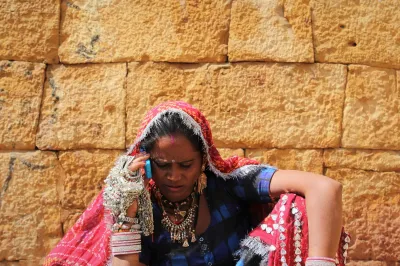Does Branchless Banking Reach Poor People? The Evidence from India
This is the second post in a mini-series in which we present new evidence from three countries on whether branchless banking is reaching poor people. This post looks at banking customers acquired and serviced by Eko as a Business Correspondent of banks in India. The first post looked at EasyPaisa customers in Pakistan.
In the second survey out of three that have been conducted, Coffey International Development interviewed 814 branchless banking customers of Eko’s service in India. Customers were interviewed at 32 agent locations in two states: the national capital region around Delhi and in primarily rural and peri-urban Bihar. As with the survey in Pakistan, customers were asked about the use of the service and also about their household living conditions that allowed an estimation to be made of their likely income levels.
Here are some of the headline figures:
- 46% of respondents were likely to be living on or below the poverty line of USD 2.00 per day.* Nearly 14% were likely to live below a poverty line of USD 1.25 per day. We used a slightly different poverty line for our analysis of EasyPaisa customers, but the research suggests that Eko is serving a higher proportion of poor customers.
- 39% of Eko customers had not used any form of financial services before and only 48% had previously had a bank account. The unbanked were 20 percentage points more likely to be poor than those who had used a bank in the past.
- As in Pakistan, customers valued the service: circa three-quarters of respondents (76%) rated the service provided by the branchless banking outlets as highly effective. A similar proportion (74%) said that losing access to the service would have a negative impact on their life. 98% found the service very or moderately easy to use.
Unlike EasyPaisa customers in Pakistan, a large number of Eko’s customers use the service for saving money, especially the poor:
- 37% of all respondents used the service for savings. When asked about their reason for saving 42% of respondents stated that they were saving in case of an emergency, with safekeeping being the next most common reason at 32%. Very few respondents (just 9%) stated that they saved with the purpose of making an investment.
- Those living on less than USD 2.00 per day were 12% more likely to use the service for saving. This may be related to the fact that those with a higher probability of being poor were less likely to have used a formal bank in the past, which is as expected.
- Most savers made deposits on a monthly basis, but around a third (34%) used the service to save on a weekly or more frequent basis.
- High savings rates may be partly attributable to the ease of use of the service. When respondents were asked to rank the ease of using Eko’s service on a scale from 1 (not easy at all) to 10 (very easy) over three-quarters of customers rated the service as 8 or above.
Next week we will look at Orange Money customers in Mali and draw some comparisons between customers of the three services.
- Chris Bold
* Note that this is a different level than the one that we used for Pakistan (which was USD 2.50). The levels that we can compare against are restricted by the levels that have been set in the nationally representative household surveys for each country.




Comments
CGAP continues to produce
CGAP continues to produce very detailed insights! I find it particularly interesting Eko customers use it to save in such numbers. Please keep up the good work, CGAP.
Add new comment